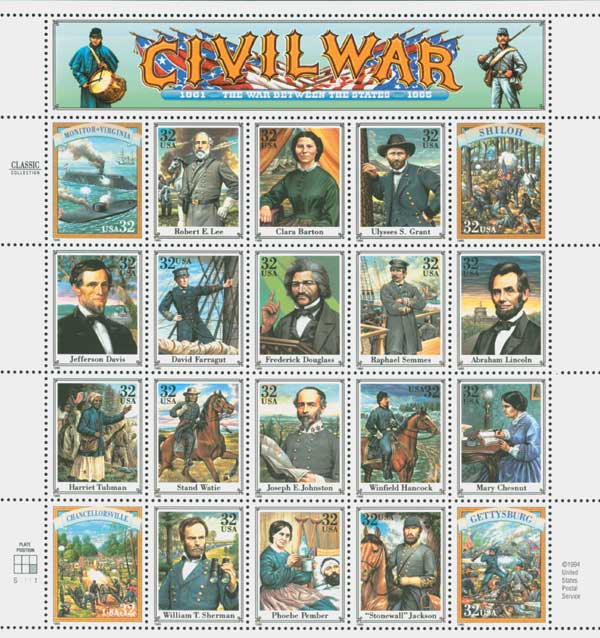
# 3591 FDC - 2002 34c Greetings From America: New Mexico
New Mexico
34¢ Greetings From America
City: New York, NY
Quantity: 200,000,000
Printed by: American Packaging Corp for Sennett Security Products
Printing Method: Photogravure
Perforations: Serpentine Die Cut 10.75
Quantity: 200,000,000
Battle Of Glorieta Pass
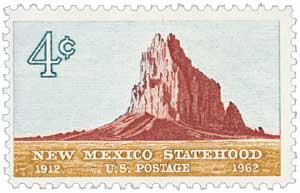
On March 26, 1862, Confederate forces launched the Battle of Glorieta Pass, aimed at breaking Union control of the West along the base of the Rocky Mountains.
In the early months of 1862, a portion of the Confederate Army set its sights on the vast western territories. Control of the Santa Fe Trail in Colorado Territory provided access to silver and gold mines and opened the way to California’s ports. This would provide a supply line to the Confederacy since the Union blockade had closed Southern ports on the East Coast.
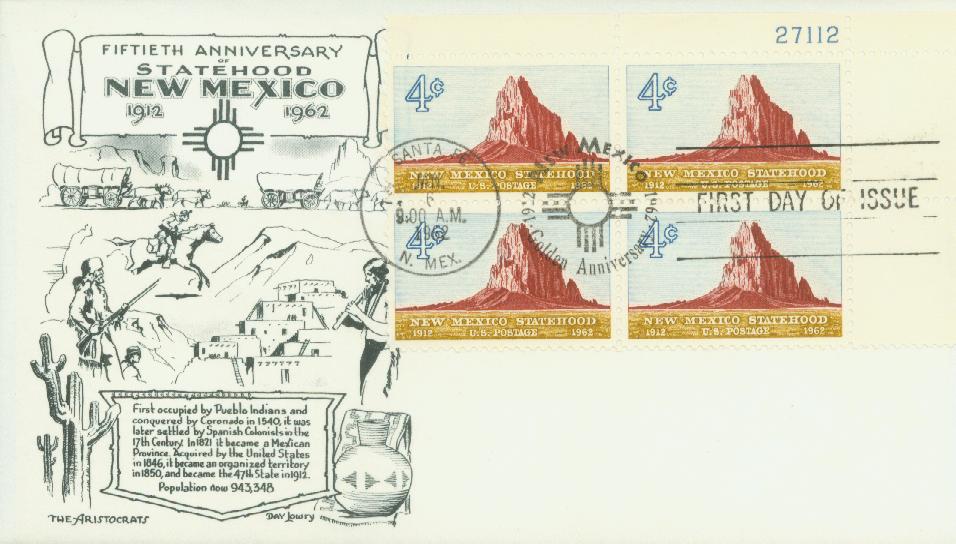
With the majority of regular Union soldiers called to the East to fight the Civil War, it seemed to be the perfect time for the Rebels to attack the sparsely populated western forts. Brigadier General Henry Sibley had been an officer in the US Army stationed in New Mexico Territory when the war began. He resigned, joined the Confederate Army, and convinced President Davis of his plan to extend the Confederacy to the Pacific Ocean. Sibley organized the Army of New Mexico, using Texas riflemen. They began their march through Texas to New Mexico Territory, on his way to Colorado.
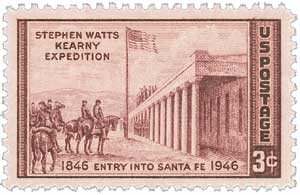
After a victory in the Battle of Valverde in February 1862, Sibley sent a small force to Santa Fe under the command of Major Charles Pyron. The Union soldiers retreated to the safety of Fort Union. If Sibley seized control of the Fort, he would have the supplies he needed to continue to Colorado.
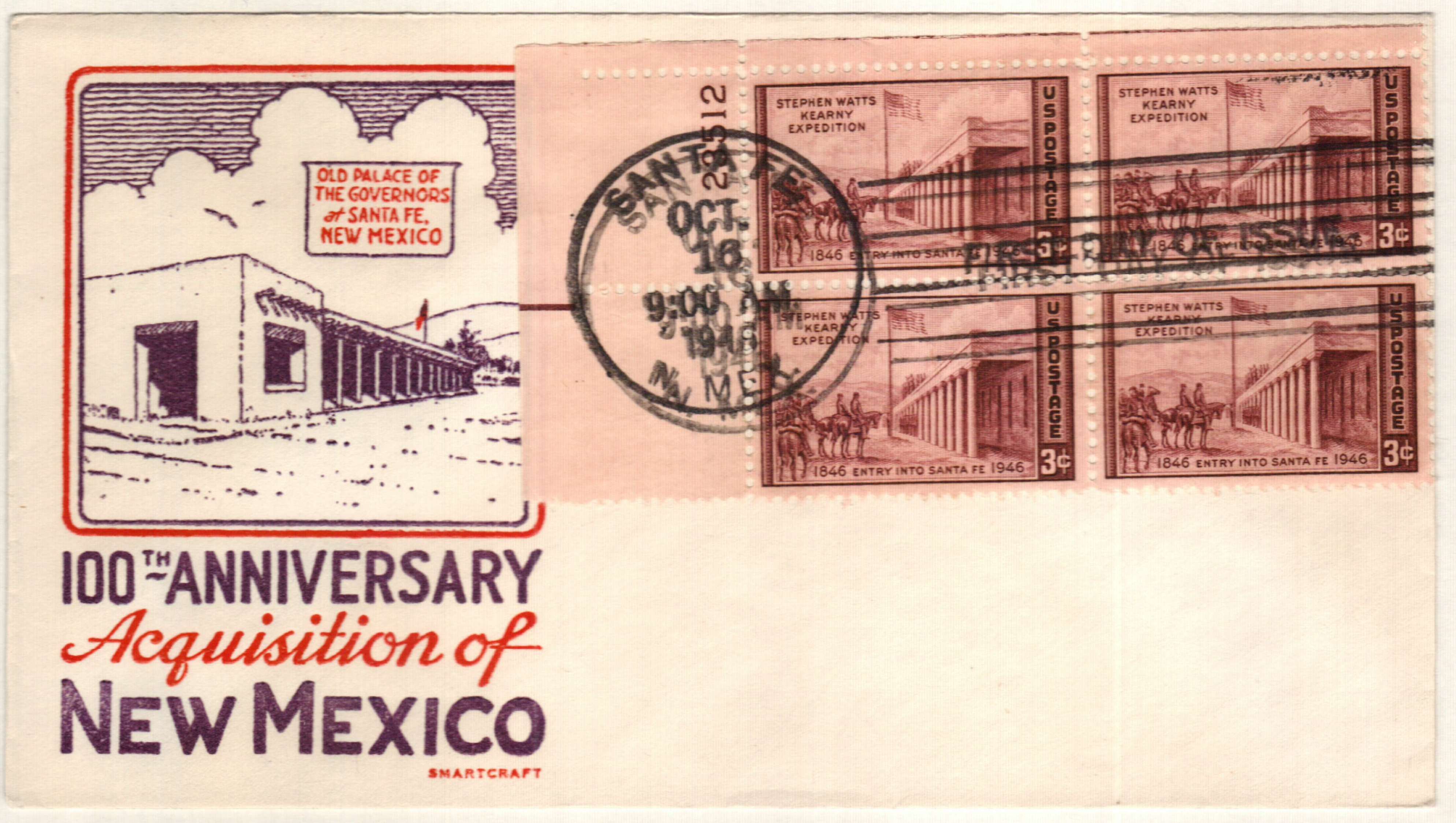
A brigade of Colorado miners led by Colonel John Slough marched through deep snow from Denver, Colorado, to join the Union forces at Fort Union. Despite orders to stay at Fort Union, Slough and his miners, joined by additional men from the fort, went to meet the enemy. The advance troops of about 400, led by Major John Chivington, set up camp east of Glorieta Pass, on the southern tip of the Sangre de Cristo Mountains.
Meanwhile, Confederate forces left Santa Fe for Fort Union. They camped in Apache Canyon, on the western side of the pass. On March 26, 1862, Chivington’s men captured a Confederate picket post before advancing on the rest of the forces. The Southern Army was overpowered and retreated to their camp. The Union soldiers returned to camp to wait for Slough to arrive with the rest of the men.
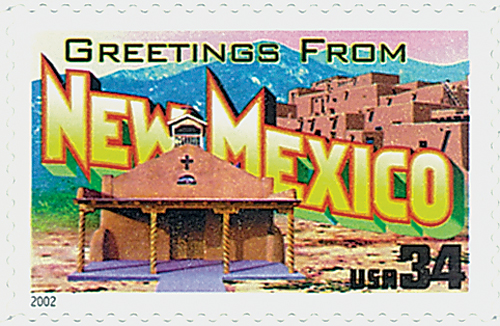
The next day, both camps were concerned with tending to their wounded, waiting for reinforcements, and planning for an attack. By the morning of March 28, 1,100 Confederate troops were prepared to confront the 1,300-strong Union Army.
Leaving a small detail to guard the supply train, the Confederates marched along the Santa Fe Trail. They met the Union forces at Pigeon’s Ranch and the fighting began. In the afternoon, Confederate soldiers stationed themselves above the battle on Sharpshooter’s Ridge and targeted the Union artillerymen and infantry below. Slough ordered a retreat, leaving the field to the Confederacy.
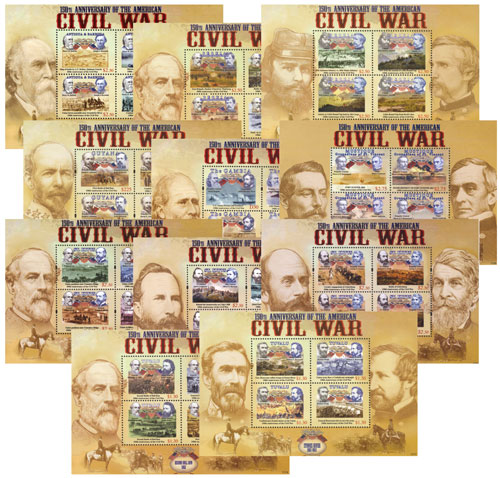
Victory celebrations were short-lived. While the bulk of the Union forces were fighting for control of Glorieta Pass, Major Chivington and two battalions of infantry circled around the pass to attack the Confederate flank or rear. Instead, they discovered the sparsely guarded supply train. After easily overcoming the opposition, the Northern soldiers set fire to the wagons, killed or drove off the horses and mules, and disabled the cannon.
The Confederates could not continue without supplies. Rather than marching triumphantly to Denver, they began their long journey back to Texas. After the disastrous campaign, Sibley was transferred to Louisiana and led unsuccessful battles. He was court-martialed for cowardice and removed from command.
New Mexico
34¢ Greetings From America
City: New York, NY
Quantity: 200,000,000
Printed by: American Packaging Corp for Sennett Security Products
Printing Method: Photogravure
Perforations: Serpentine Die Cut 10.75
Quantity: 200,000,000
Battle Of Glorieta Pass

On March 26, 1862, Confederate forces launched the Battle of Glorieta Pass, aimed at breaking Union control of the West along the base of the Rocky Mountains.
In the early months of 1862, a portion of the Confederate Army set its sights on the vast western territories. Control of the Santa Fe Trail in Colorado Territory provided access to silver and gold mines and opened the way to California’s ports. This would provide a supply line to the Confederacy since the Union blockade had closed Southern ports on the East Coast.

With the majority of regular Union soldiers called to the East to fight the Civil War, it seemed to be the perfect time for the Rebels to attack the sparsely populated western forts. Brigadier General Henry Sibley had been an officer in the US Army stationed in New Mexico Territory when the war began. He resigned, joined the Confederate Army, and convinced President Davis of his plan to extend the Confederacy to the Pacific Ocean. Sibley organized the Army of New Mexico, using Texas riflemen. They began their march through Texas to New Mexico Territory, on his way to Colorado.

After a victory in the Battle of Valverde in February 1862, Sibley sent a small force to Santa Fe under the command of Major Charles Pyron. The Union soldiers retreated to the safety of Fort Union. If Sibley seized control of the Fort, he would have the supplies he needed to continue to Colorado.

A brigade of Colorado miners led by Colonel John Slough marched through deep snow from Denver, Colorado, to join the Union forces at Fort Union. Despite orders to stay at Fort Union, Slough and his miners, joined by additional men from the fort, went to meet the enemy. The advance troops of about 400, led by Major John Chivington, set up camp east of Glorieta Pass, on the southern tip of the Sangre de Cristo Mountains.
Meanwhile, Confederate forces left Santa Fe for Fort Union. They camped in Apache Canyon, on the western side of the pass. On March 26, 1862, Chivington’s men captured a Confederate picket post before advancing on the rest of the forces. The Southern Army was overpowered and retreated to their camp. The Union soldiers returned to camp to wait for Slough to arrive with the rest of the men.

The next day, both camps were concerned with tending to their wounded, waiting for reinforcements, and planning for an attack. By the morning of March 28, 1,100 Confederate troops were prepared to confront the 1,300-strong Union Army.
Leaving a small detail to guard the supply train, the Confederates marched along the Santa Fe Trail. They met the Union forces at Pigeon’s Ranch and the fighting began. In the afternoon, Confederate soldiers stationed themselves above the battle on Sharpshooter’s Ridge and targeted the Union artillerymen and infantry below. Slough ordered a retreat, leaving the field to the Confederacy.

Victory celebrations were short-lived. While the bulk of the Union forces were fighting for control of Glorieta Pass, Major Chivington and two battalions of infantry circled around the pass to attack the Confederate flank or rear. Instead, they discovered the sparsely guarded supply train. After easily overcoming the opposition, the Northern soldiers set fire to the wagons, killed or drove off the horses and mules, and disabled the cannon.
The Confederates could not continue without supplies. Rather than marching triumphantly to Denver, they began their long journey back to Texas. After the disastrous campaign, Sibley was transferred to Louisiana and led unsuccessful battles. He was court-martialed for cowardice and removed from command.






